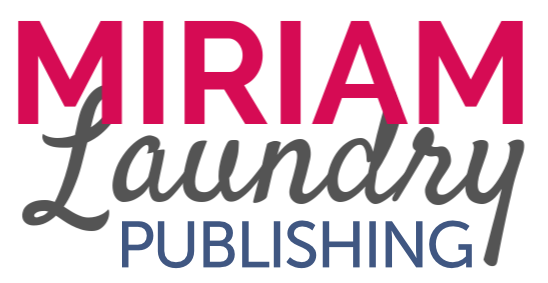When you think of creativity, what comes to mind? Maybe it’s the classic stereotype of someone with a messy desk, a head full of ideas, and a knack for ignoring the clock. The free spirit who lets inspiration strike whenever and wherever it pleases. While that might be what the movies often show, I’d argue there’s another way to think about creativity—a way that embraces structure, deadlines, and routines. Yes, even for us children book writers.
There’s this common misconception that to be a true creative, you need to throw structure out the window. But the thing is: freedom without structure often leads to chaos.
Think about this for a moment: when there’s no plan and no system in place, you’re constantly reacting to what’s happening around you. Every decision feels overwhelming, every task uncertain.
That’s not freedom; that’s chaos.
True freedom comes from intentionality—and to live with intention requires planning.
Ask yourself this: if your goal is to write and publish your children’s book (hopefully this year!) what action steps do you plan to take to get there? Life is full of responsibilities and distractions—and without a plan, your goal remains just that: a goal.
When you begin to prioritize and structure your goals, that is when you will start to see yourself move closer to your dreams. Let’s look at the power of planning for your children’s book and five ways it can actually fuel your creativity—not stifle it.
The Power of Children’s Book Planning
Think of setting deadlines and establishing routines like budgeting your money. At first, it might feel restrictive to have everything planned, but over time, you start to see the freedom it brings. Just like budgeting your money lets you spend intentionally so that the important things don’t get swept aside, budgeting your time is the same. When you plan time for deadlines and establish routines, it helps you prioritize what really matters.
My advice? Write it down, and then watch it start to happen.
That’s the power in planning. Because when you schedule time for tasks, you will be more intentional—and that intention turns into action.
5 Ways Structure Brings Freedom
It seems like a funny paradox to say that planning provides freedom. Because isn’t freedom just doing whatever you want, when you want? In this case, not exactly. Freedom is choosing to use your time intentionally and purposefully.
Here’s how structure can actually fuel your creativity:
1. Shift Your Mindset
Don’t let deadlines and routines feel like something that looms over you. Instead, use them as a tool. What if instead of dreading them, you saw them as motivation? What if your routine of writing everyday wasn’t just “something you had to do,” but you saw it as an opportunity to let your creativity flow with no restrictions. When you shift your mindset to believe that these are good things, everything changes. Suddenly you’re focused on the end result—and that focus creates action.
2. Let Deadlines Spark Urgency
Most of us work best under deadlines—even if we may not realize it. Think of it like signing up for a marathon. Once you’ve committed, you’d likely create a training schedule to prepare your body and stay on track for race day. But if you weren’t signed up, you might only run occasionally, with no real plan or goal in sight. Setting a deadline creates that same sense of urgency and purpose. Without a set timeline, it’s too easy to let your creative projects go unfinished.
3. Give Yourself a Specific Deadline
Even if no one else is holding you accountable, set your own deadlines. For instance, vague plans like, “I’ll write when I feel inspired,” can often lead to procrastination. Instead, decide on goals that are attainable, like:
- “I’ll draft 500 words by Friday.”
- “I'll finish self-editing my book by the end of the month.”
- “I’ll spend 30 minutes each morning this week brainstorming character ideas.”
Specific deadlines turn abstract goals into achievable milestones. To make them even more effective, try using SMART goals: Specific, Measurable, Achievable, Relevant, Time-Bound.
4. Plan Time for Creativity
‘Planned creativity’—such as scheduled writing sessions or even word count goals—isn’t meant to restrict you. It can actually free you from decision paralysis, or the inability to make a decision because you are too overwhelmed by options.
When you plan time for creativity, like writing for 30 minutes first thing in the morning, you actually remove the mental hurdle of deciding when you are going to write. Because you now know when you are sitting down to write, you can focus on what really matters—which is getting your thoughts from your brain to the page.
5. Decide How and When You Work Best
Maybe you feel more creative at the first light of day, or maybe it’s in the dark, quiet hours of the night. Maybe you prefer short periods of working time, or perhaps longer, uninterrupted sessions. Allow yourself to experiment with different routines until you find something that works for you. Once you find it, and it feels right, plan your writing around your how and when.The beauty of structure isn’t in its rigidity but in the freedom it creates. When you know what needs to be done and when, you’re no longer reacting to life—you’re leading it. Remember, creativity thrives when it has room to breathe (and structure provides that room).
Freedom comes from intentionality. So, plan well, stick to it, and soon enough you’ll be holding your children’s book in your hands, saying, “Wow, I really did it!”
I believe in you!
Not sure where to start your planning?
Download our free structured resources and get started right now.
What’s holding you back from getting started today?
✨Children’s Book Blueprint: To outline your children’s book in just 24 hours.
✨Editing Checklist: For when you are done with your first draft and ready for the editing process.